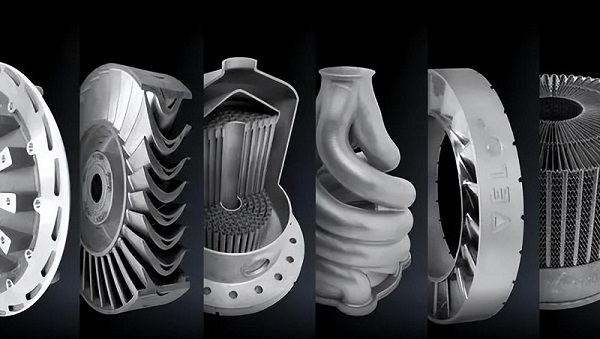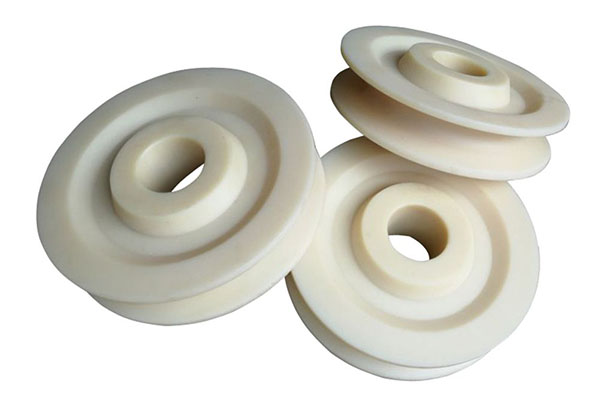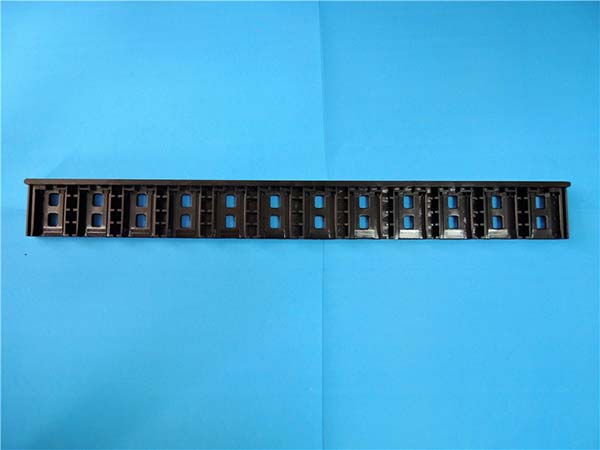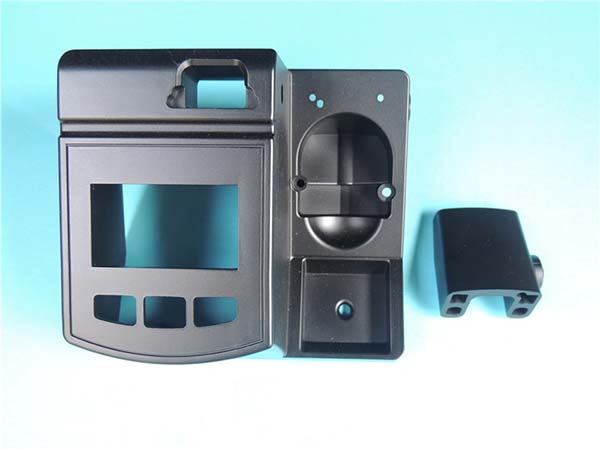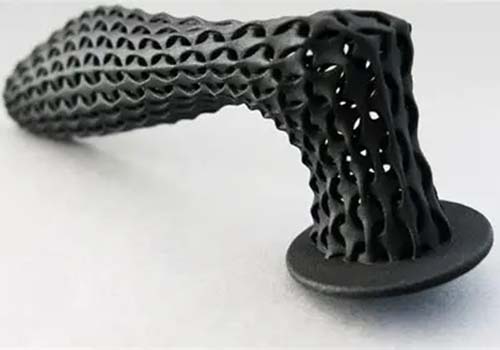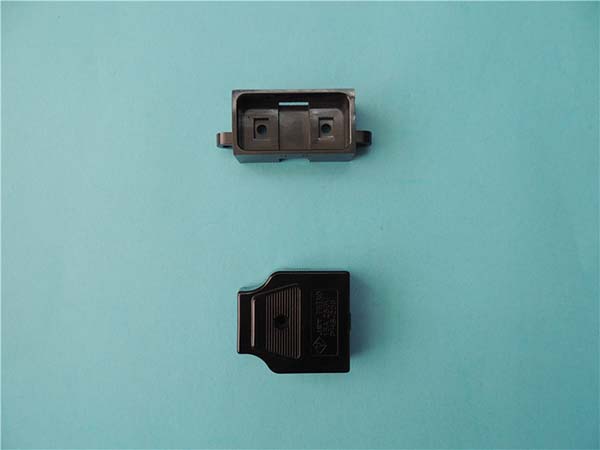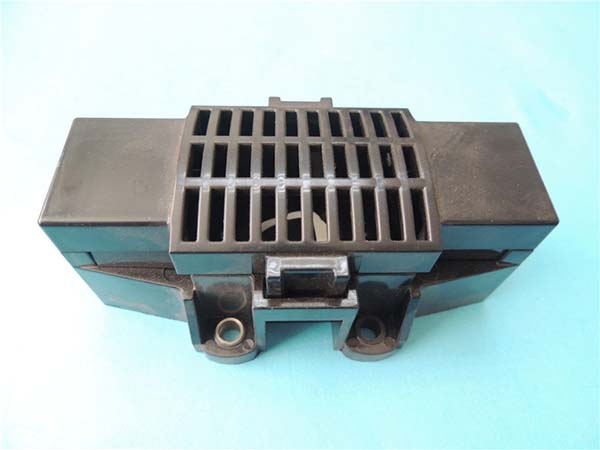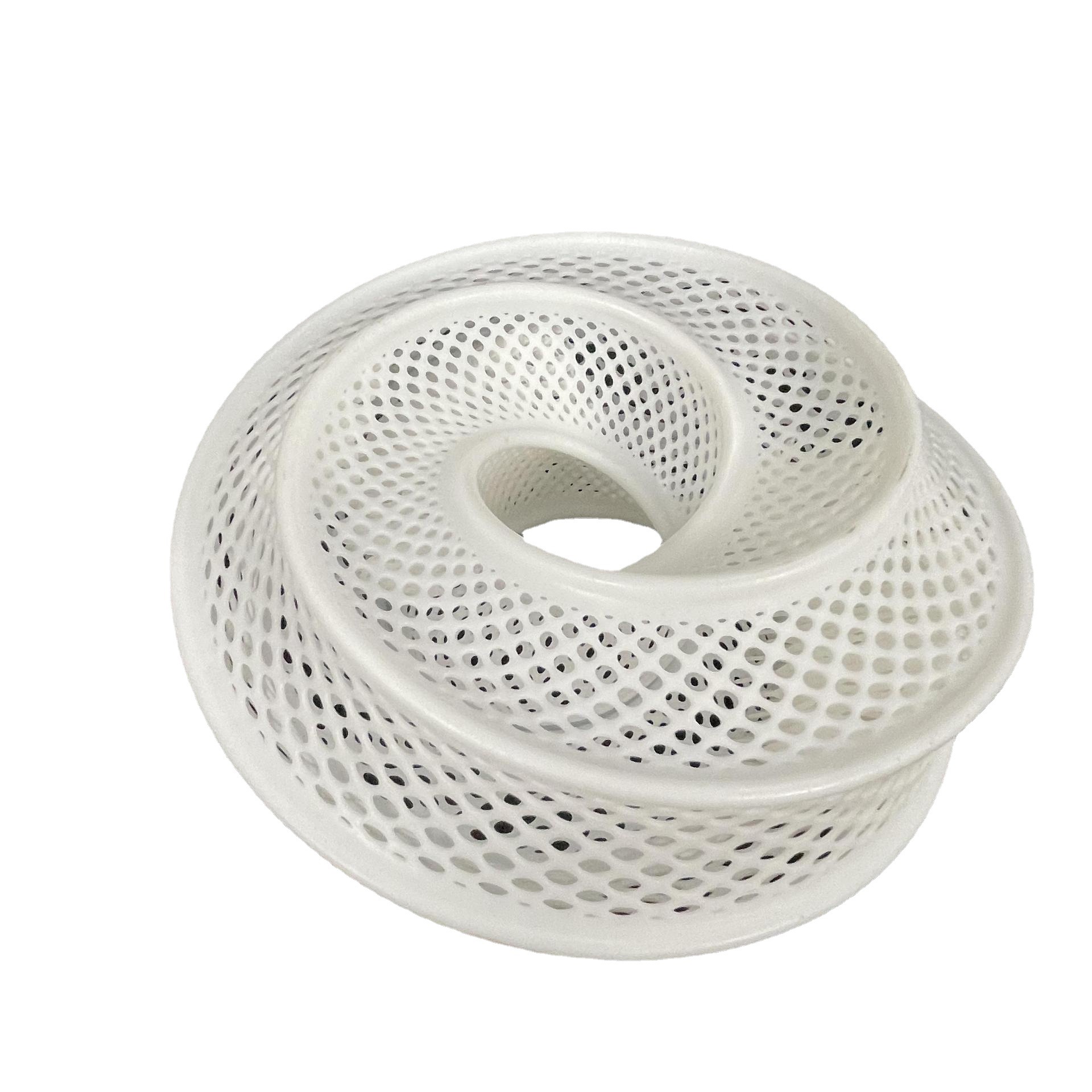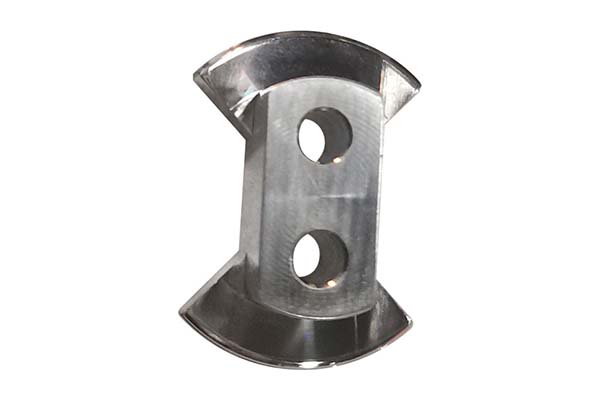3D Scanning and Printing: Unraveling the Mysteries for Your Business and Projects
Yigu: In the rapidly evolving landscape of modern technology, 3D scanning and printing have emerged as transformative forces, revolutionizing multiple industries. From creating intricate prototypes in product development to producing customized medical implants, these technologies have the power to turn digital designs into physical objects with remarkable precision. However, for many individuals and businesses looking to harness their potential, the complex jargon, diverse technologies, and a wide array of materials and applications can be overwhelming.
If you've ever found yourself pondering questions like "Which 3D scanning technology is best for my small - scale product design project?" or "How can I ensure high - quality 3D prints for my dental practice?" you're not alone. There's a maze of choices to navigate, from different types of 3D scanners and printers to a vast selection of materials and post - processing techniques. This article is here to be your comprehensive guide, cutting through the confusion and providing you with in - depth knowledge and practical insights to make informed decisions about 3D scanning and printing for your specific needs.
1. 3D Scanning Technology
1.1 Types of 3D Scanners
3D scanning technology serves as the foundation for 3D printing, enabling the conversion of real - world objects into digital 3D models. There are several types of 3D scanners, each with its unique features and applications.
Laser Scanning: Laser scanners are widely used in various industries. They work by emitting laser beams onto an object's surface and measuring the time it takes for the laser to bounce back or the phase shift of the laser light. This technology offers high - accuracy measurements, often with sub - millimeter precision. For example, in the automotive industry, laser scanning can be used to create precise 3D models of car parts for quality control. A typical laser scanner can capture up to hundreds of thousands of points per second, providing detailed surface information.
Structured Light Scanning: Structured light scanners project a pattern of light, such as stripes or dots, onto an object. By analyzing how the pattern is distorted on the object's surface from different viewpoints, they can calculate the object's 3D shape. These scanners are known for their high - resolution scans and are often used in applications where fine details are crucial, like in dental scanning for creating custom dental prosthetics. They can achieve resolutions as high as a few micrometers, allowing for extremely accurate reproductions of small and complex objects.
Photogrammetry: This method uses multiple photographs of an object taken from different angles. Through complex algorithms, it triangulates the positions of points in the images to create a 3D model. Photogrammetry is cost - effective and accessible, as it only requires a camera. It is commonly used in cultural heritage preservation to digitize historical artifacts. For instance, archaeologists can use photogrammetry to create 3D models of ancient sculptures, which can be used for research, restoration, or virtual exhibitions.
Time - of - flight (TOF): TOF scanners measure the time it takes for a light signal to travel from the scanner to the object and back. They are fast and can cover large areas, making them suitable for applications like large - scale industrial inspections or indoor mapping. Some TOF scanners can scan an entire room in a matter of minutes, providing a quick overview of the space for architectural or facility management purposes.
When it comes to the physical form of 3D scanners, there are hand - held scanners, desktop scanners, and industrial scanners:
- Hand - held scanners are highly portable and versatile. They allow users to freely move around an object while scanning, making them ideal for scanning large or irregularly shaped objects on - site. However, their accuracy can be slightly lower compared to other types, usually in the range of 0.1 - 1 mm. They are popular in fields such as art restoration, where the ability to scan sculptures or artworks in place is crucial.
- Desktop scanners are designed for smaller objects and offer higher precision, often with an accuracy of around 0.01 - 0.1 mm. They are suitable for applications like jewelry design, where intricate details need to be captured accurately. These scanners are usually placed on a stable surface and the object is placed on a rotating platform for a complete 360 - degree scan.
- Industrial scanners are built for high - volume and high - precision industrial applications. They can handle large - scale industrial parts with extreme accuracy, sometimes reaching sub - micron levels. These scanners are often integrated into manufacturing processes for quality control and reverse engineering. For example, in aerospace manufacturing, industrial scanners are used to inspect the complex shapes of turbine blades to ensure they meet strict design specifications.
1.2 Key Metrics in 3D Scanning
Point - cloud data is a fundamental concept in 3D scanning. It is a set of data points in a three - dimensional coordinate system that represents the surface of an object. Each point in the point - cloud has X, Y, and Z coordinates, and may also include additional information such as color or reflectance. For example, when scanning a human face, the point - cloud data would capture the exact shape of the face, with each point corresponding to a specific location on the face's surface.
Scan resolution refers to the density of points in the point - cloud. A higher resolution means more points are captured, resulting in a more detailed representation of the object. For example, a high - resolution scan of a mechanical part might capture every small groove and edge, while a low - resolution scan might miss some of these fine details. In applications like 3D printing of intricate jewelry, a high scan resolution of around 0.05 mm or less is often required to accurately replicate the complex designs.
Scan accuracy is the degree to which the scanned model matches the actual physical object. High - accuracy scans are essential in industries such as aerospace and medical. In aerospace, parts need to be manufactured with extremely tight tolerances. A scan accuracy of ±0.01 mm or better might be required when scanning engine components to ensure proper fit and function. In medical applications, like creating custom implants, high accuracy is crucial for patient safety and the effectiveness of the treatment. For dental implants, an accuracy of around 0.1 mm is typically necessary to ensure a proper fit in the patient's mouth. Different applications have different requirements for resolution and accuracy. For example, in archaeology, while high resolution is important for capturing the details of artifacts, the accuracy requirements might not be as stringent as in aerospace manufacturing. On the other hand, in industrial tooling, both high resolution and high accuracy are often required to ensure the proper functioning of the tools.
2. 3D Printing Technology
2.1 Major 3D Printing Methods
3D printing technology, also known as additive manufacturing, has revolutionized the manufacturing process by creating three - dimensional objects layer by layer from a digital model. There are several major 3D printing methods, each with its own unique characteristics, advantages, and limitations.
Fused Deposition Modeling (FDM): FDM is one of the most widely used 3D printing methods, especially for desktop 3D printers. It works by heating a thermoplastic filament, such as ABS (acrylonitrile - butadiene - styrene) or PLA (polylactic acid), until it becomes molten. The molten material is then extruded through a nozzle, which moves in the X, Y, and Z axes according to the digital model. As the material cools, it solidifies and bonds to the previous layer, gradually building up the object. FDM is relatively inexpensive, easy to use, and has a wide range of available materials. However, it typically has a lower resolution compared to some other methods, resulting in a somewhat rough surface finish. For example, when printing a small plastic toy, the layer lines may be visible on the surface.
Stereolithography (SLA): SLA uses a laser to cure a liquid photopolymer resin layer by layer. A vat is filled with the liquid resin, and a build platform is initially positioned just below the surface of the resin. The laser traces the cross - section of the object onto the resin surface, causing the resin to solidify. After each layer is cured, the build platform is lowered slightly, and a new layer of resin is spread over the previously cured layer. SLA offers high - resolution prints with smooth surfaces, making it ideal for applications such as jewelry design, dental prosthetics, and creating detailed models. For instance, in jewelry design, SLA can accurately reproduce the intricate details of a ring setting. But it has some drawbacks, including the need for post - processing to remove support structures and the relatively high cost of both the equipment and the resin materials.
Selective Laser Sintering (SLS): SLS employs a high - power laser to sinter powdered materials, such as polymers, metals, or ceramics. The powder is spread evenly across a build platform, and the laser selectively heats the powder particles in the areas corresponding to the cross - section of the object. The heat causes the powder particles to fuse together, forming a solid layer. Once a layer is complete, the build platform is lowered, and a new layer of powder is added. SLS can produce parts with high strength and complex geometries without the need for additional support structures, as the unsintered powder supports the part during printing. It is commonly used in industries like aerospace and automotive for manufacturing functional prototypes and end - use parts. For example, in the aerospace industry, SLS can be used to create lightweight, complex - shaped components for aircraft engines. However, SLS equipment is expensive, and the printing process can be time - consuming.
Digital Light Processing (DLP): DLP is similar to SLA but uses a digital micromirror device (DMD) instead of a laser. The DMD projects an image of the cross - section of the object onto the liquid resin, curing the entire layer at once. This makes DLP potentially faster than SLA, especially for large or complex objects. DLP also offers high - resolution prints and is often used in applications such as 3D printing of small, detailed objects like miniatures and dental models. For example, in the production of tabletop gaming miniatures, DLP can create highly detailed and smooth - surfaced figures. However, like SLA, it requires careful handling of the liquid resin and post - processing.
Binder Jetting: In binder jetting, a liquid binder is selectively deposited onto a bed of powder material, such as sand, metal powder, or ceramic powder. The binder bonds the powder particles together, forming a solid layer. After each layer is printed, a new layer of powder is spread, and the process continues. Binder jetting can be used to create large - scale objects and is suitable for a wide range of materials. It is often used in the construction industry for creating architectural models and in metal casting for producing molds. For example, in construction, binder jetting can be used to print large - scale concrete - like structures for building prototypes. But the printed parts may require additional post - processing, such as curing or infiltration, to increase their strength.
Metal Additive Manufacturing: This is a broad category that includes several methods for printing metal parts, such as Direct Metal Laser Sintering (DMLS), Electron Beam Melting (EBM), and Laser Metal Deposition (LMD). These methods use high - energy sources (lasers or electron beams) to melt and fuse metal powders or wire feedstock. Metal additive manufacturing is crucial in industries like aerospace, where lightweight, high - strength metal parts are required. For example, in aerospace, it can be used to create complex, custom - designed turbine blades that are more efficient and lighter than traditional cast or machined blades. However, it is a complex and expensive process, requiring specialized equipment and skilled operators.
A comparison of these major 3D printing methods is presented in the following table:
| 3D Printing Method | Principle | Materials Used | Advantages | Disadvantages | Typical Applications |
| FDM | Extrusion of molten thermoplastic filament | ABS, PLA, PETG, TPU, etc. | Inexpensive, easy to use, wide range of materials | Low resolution, rough surface finish | Prototyping, education, home use |
| SLA | Laser - curing of liquid photopolymer resin | Photopolymer resins | High - resolution, smooth surface | High - cost equipment and materials, need for support structures and post - processing | Jewelry design, dental prosthetics, detailed models |
| SLS | Laser - sintering of powder materials | Polymers, metals, ceramics | High - strength parts, complex geometries without support, wide material range | Expensive equipment, time - consuming | Aerospace, automotive, functional prototypes |
| DLP | Projection of light image to cure liquid resin | Photopolymer resins | High - resolution, potentially fast for large objects | Similar to SLA, requires careful resin handling | Small, detailed objects, dental models, miniatures |
| Binder Jetting | Deposition of liquid binder on powder material | Sand, metal powder, ceramic powder, etc. | Can create large - scale objects, wide material range | Requires post - processing for strength | Construction models, metal casting molds |
| Metal Additive Manufacturing | High - energy melting of metal powders or wire | Titanium alloys, aluminum powders, stainless steel, etc. | Creates high - strength metal parts, complex geometries | Complex, expensive, requires skilled operators | Aerospace, high - performance engineering parts |
The components of a 3D printer play crucial roles in the printing process. The print head (or nozzle) is responsible for extruding the printing material precisely. In FDM printers, a high - quality print head can ensure smooth and consistent extrusion of the filament, which is essential for achieving good layer adhesion and dimensional accuracy. For example, a clogged or uneven - flowing print head can lead to gaps in the layers or inconsistent extrusion widths, resulting in a poorly formed object.
The printing platform also matters. A stable and flat printing platform helps to ensure that the printed object adheres properly during the initial layers. Some printers have heated platforms, which are especially important when using materials like ABS that are prone to warping. The heated platform reduces the temperature difference between the printed layers and the platform, minimizing the risk of warping.
Print speed is an important factor to consider. A faster - printing 3D printer can save time, especially when producing large or multiple objects. However, increasing the print speed may come at the cost of print quality. For instance, in FDM printing, if the print speed is too high, the molten filament may not have enough time to bond properly with the previous layer, leading to weak inter - layer adhesion and a structurally unsound object. On average, a typical desktop FDM 3D printer might have a print speed ranging from 30 - 200 mm/s, while some high - end industrial printers can achieve even higher speeds.
Layer resolution refers to the thickness of each layer that the printer deposits. A lower layer resolution (thinner layers) results in a smoother surface finish and more detailed prints. For example, in SLA printing, a layer resolution of 0.05 mm or less can produce extremely smooth - surfaced and detailed models. But reducing the layer resolution also increases the printing time, as more layers need to be printed to complete the object. In general, for applications where aesthetics and fine details are crucial, such as creating art pieces or high - precision medical models, a lower layer resolution is preferred. However, for functional prototypes or objects where speed is more important than surface finish, a higher layer resolution (thicker layers) can be used.
3. Materials for 3D Scanning and Printing
The choice of materials in 3D scanning and printing is crucial as it directly impacts the quality, functionality, and application of the final product. There is a wide range of materials available, each with its own unique properties and suitability for different 3D printing methods.
3.1 Polymers and Plastics
Polymers are a large class of materials that are widely used in 3D printing. Plastics, a type of polymer, are particularly popular due to their versatility, low cost, and ease of processing. Two of the most commonly used plastics in 3D printing are ABS (acrylonitrile - butadiene - styrene) and PLA (polylactic acid).
ABS is a thermoplastic with excellent strength and impact resistance. It has a relatively high heat - deflection temperature, making it suitable for applications where the printed parts may be exposed to heat. For example, in the automotive industry, ABS can be used to print parts such as interior components or small functional prototypes that need to withstand normal operating temperatures. However, ABS has some drawbacks. It is prone to warping during the printing process, especially for large - scale prints, and requires a heated print bed to minimize this issue. Additionally, ABS emits a distinct odor when heated during printing, which may be a concern in some environments.
PLA, on the other hand, is a biodegradable plastic made from renewable resources such as corn starch or sugarcane. It is an environmentally friendly option, which is becoming increasingly important in today's sustainable - conscious world. PLA is easier to print than ABS, as it has a lower melting point and is less likely to warp. It also produces a smoother surface finish, making it ideal for applications where aesthetics are important, such as in the creation of art pieces, jewelry, or consumer product prototypes. However, PLA has a lower heat - resistance compared to ABS, and it may not be suitable for applications where the parts will be exposed to high temperatures.
In terms of the 3D printing methods they are suitable for, both ABS and PLA are primarily used with Fused Deposition Modeling (FDM) printers. FDM printers are the most common type of desktop 3D printers, and their relatively simple extrusion - based process works well with these thermoplastic filaments. Other polymers used in 3D printing include PETG (polyethylene terephthalate glycol - modified), which has properties between ABS and PLA, such as good strength, transparency, and ease of printing, and Nylon, which is known for its high strength, flexibility, and abrasion resistance, making it suitable for applications like printing gears or mechanical parts.
3.2 Metals
Metals are used in 3D printing for applications that require high strength, heat resistance, and conductivity. In the aerospace industry, for example, 3D - printed metal parts can be used to create lightweight yet strong components for aircraft engines or structural elements. Some common metals used in 3D printing include titanium alloys and aluminum powders.
Titanium alloys are highly valued for their excellent strength - to - weight ratio, corrosion resistance, and biocompatibility. They are widely used in aerospace, medical, and high - end automotive applications. In the medical field, titanium alloy implants can be 3D - printed to fit the exact anatomy of a patient, improving the success rate of surgeries and patient recovery. However, 3D printing with titanium alloys is a complex and expensive process. It often requires specialized equipment, such as high - power lasers for processes like Direct Metal Laser Sintering (DMLS), and strict quality control measures due to the high cost of the material and the critical nature of its applications.
Aluminum powders are also used in 3D printing, especially in the automotive and aerospace industries. Aluminum is lightweight, has good thermal conductivity, and is relatively easy to process compared to some other metals. It can be used to print parts such as engine components, heat sinks, or structural elements in aircraft. Aluminum 3D printing can offer design freedom, allowing for the creation of complex geometries that are difficult to achieve with traditional manufacturing methods. For instance, lattice - structured aluminum parts can be printed to reduce weight while maintaining strength, which is crucial for applications where weight reduction is a priority, like in aircraft design.
3.3 Ceramics
Ceramics are known for their high hardness, heat resistance, and chemical stability. In 3D printing, ceramics can be used to create parts for applications in the aerospace, automotive, and biomedical industries. For example, in the aerospace industry, ceramic parts can be used in high - temperature environments, such as in the combustion chambers of engines. In the biomedical field, ceramic materials like hydroxyapatite can be 3D - printed into bone - like structures for bone grafting or dental applications. However, 3D printing with ceramics also has challenges. The raw ceramic materials are often in powder form, and the printing process requires careful control to ensure the final product has the desired properties. After printing, the ceramic parts usually need to be sintered at high temperatures to increase their strength, which can also cause shrinkage and dimensional changes.
3.4 Composites
Composites are materials made by combining two or more different materials to achieve unique properties. In 3D printing, composites can offer enhanced strength, stiffness, or other properties compared to single - material prints. For example, carbon - fiber - reinforced composites can be 3D - printed to create parts with high strength - to - weight ratios. These composites are often used in the aerospace and automotive industries for applications such as creating lightweight yet strong structural components. Another example is glass - fiber - reinforced composites, which can improve the mechanical properties of 3D - printed parts, making them more suitable for applications where durability and strength are important, like in industrial tooling.
3.5 Bio - materials
Bio - materials are materials that are compatible with biological systems and are of great interest in the medical field. They have the potential to revolutionize the way medical treatments are carried out, especially in tissue engineering and personalized medicine. For example, in tissue engineering, bio - materials can be used to create scaffolds on which cells can grow and differentiate, ultimately forming functional tissues. Some common bio - materials used in 3D printing include natural polymers like collagen and hyaluronic acid, as well as synthetic polymers such as polyglycolic acid (PGA) and polycaprolactone (PCL). These materials can be designed to have properties that mimic the extracellular matrix of natural tissues, providing a suitable environment for cell growth and tissue regeneration.
In dental applications, bio - materials can be used to 3D - print custom - made dental implants, crowns, or orthodontic devices. These printed products can be tailored to fit the patient's unique dental anatomy, improving the fit and functionality compared to traditional, mass - produced dental products. The use of bio - materials in 3D printing also holds promise for the development of personalized medicine, where drugs can be 3D - printed in customized dosage forms or delivery systems based on a patient's specific needs. However, the development and use of bio - materials in 3D printing are still in the early stages, and there are challenges to overcome, such as ensuring the long - term biocompatibility and stability of the printed products, as well as optimizing the printing processes to achieve the desired properties.
4. Applications Across Industries
The applications of 3D scanning and printing technology span across a wide range of industries, revolutionizing the way products are designed, prototyped, and manufactured.
4.1 In Aerospace and Automotive
In the aerospace industry, 3D scanning and printing play crucial roles in various aspects. For part manufacturing, 3D printing enables the production of complex and lightweight components. For example, GE Aviation uses 3D printing to manufacture fuel nozzles for its LEAP engines. These nozzles have complex internal geometries that are difficult to achieve with traditional manufacturing methods. By using 3D printing, the number of parts in the nozzle is reduced from over 20 to just one, resulting in a 25% weight reduction and a five - fold increase in durability.
In Prototype validation, 3D scanning can quickly create accurate models of new aerospace designs. Engineers can then use these models to test and optimize the design before full - scale production. This significantly reduces the time and cost associated with traditional prototyping methods. For instance, Airbus uses 3D scanning to create prototypes of new aircraft components, allowing for faster design iterations and better performance optimization.
In the automotive industry, 3D printing is widely used for part manufacturing as well. Volkswagen, for example, uses 3D printing to produce custom - made parts for its classic car restoration projects. These parts are often no longer available from traditional suppliers, and 3D printing provides a cost - effective solution. 3D scanning is also used for quality control. By scanning finished parts and comparing them to the original design, manufacturers can quickly identify any deviations and take corrective actions. This helps to ensure the high quality and reliability of automotive products.
4.2 In Medical and Dental Fields
In the medical field, 3D scanning and printing have transformed the way healthcare is delivered. In Customized medical equipment, 3D printing allows for the creation of personalized implants and prosthetics. For example, in orthopedics, doctors can use 3D scanning to create a detailed model of a patient's bone structure. Based on this model, a customized implant can be 3D - printed to fit the patient's unique anatomy precisely. This improves the success rate of surgeries and reduces the recovery time for patients.
In the Dental field, 3D scanning and printing are also making a significant impact. Dental clinics use 3D scanners to create digital impressions of patients' teeth, eliminating the need for messy and uncomfortable traditional impressions. These digital models can then be used to 3D - printDentures, crowns, and bridges, or Orthodontic appliances and retainers For example, companies like 3D Systems have developed 3D - printing solutions for dental applications. Their technology allows for the production of high - quality, custom - fit dentures in a more efficient and cost - effective manner compared to traditional methods. 3D - printed dentures can be tailored to the patient's oral anatomy, providing better comfort and functionality.
4.3 In Other Industries
In the consumer goods industry, 3D printing enables the production of customized products. For example, companies can use 3D printing to create personalized jewelry, where customers can design their own unique pieces and have them printed on - demand. In the electron industry, 3D printing can be used to create custom - designed enclosures for electronic devices, allowing for better heat dissipation and unique aesthetics.
In the construction industry, 3D printing is utilized for architectural model making, aiding architects and designers in swiftly visualizing their concepts. Certain companies are also exploring the application of 3D printing in actual construction, with the potential to build entire buildings more efficiently and with less waste. For instance, Apis Cor, a Russian company, has successfully 3D-printed a small house in just 24 hours using a mobile 3D printer
In Industrial mold manufacturing, 3D printing can produce complex molds with internal cooling channels, which improves the efficiency of the molding process and the quality of the final products. For example, in the injection molding of plastic parts, molds with optimized cooling channels can reduce the cooling time of the parts, increasing production speed and reducing costs.
3D scanning and printing technology are also used in Cultural heritage protection to create digital replicas of artifacts. This helps in preserving the cultural heritage, as the original artifacts can be stored in a safe environment while the replicas can be used for research, exhibition, or educational purposes. For instance, the British Museum has used 3D scanning to digitize many of its precious artifacts, allowing people from all over the world to view and study them online.
5. Software and Data Processing
Software and data processing are integral parts of the 3D scanning and printing workflow, playing crucial roles in translating physical objects into digital models and preparing them for 3D printing.
5.1 CAD Software and 3D Modeling
CAD software (Computer - Aided Design) is the cornerstone of 3D design for 3D printing. It allows designers to create precise 3D models with a high degree of control over dimensions, shapes, and structures. For example, in mechanical design, CAD software like SolidWorks or AutoCAD can be used to design complex machine parts. Designers can use features such as parametric design, which enables easy modification of the model by adjusting parameters. If a gear needs to be redesigned with a different number of teeth or a different pitch, the designer can simply change the relevant parameters in the CAD software, and the entire model will be updated automatically.
3D modeling in CAD software involves creating virtual representations of objects. There are different techniques for 3D modeling, such as polygonal modeling, NURBS (Non - Uniform Rational B - Splines) modeling, and sculpting. Polygonal modeling is widely used in 3D printing as it can create detailed and complex shapes. It involves creating a mesh of polygons (usually triangles or quadrilaterals) to form the surface of the object. For example, when creating a 3D - printable figurine, a designer might use polygonal modeling to shape the body, face, and clothing details. NURBS modeling, on the other hand, is more suitable for creating smooth, organic shapes, such as the curves of a car body or a product with a sleek design. Sculpting in 3D software, similar to traditional clay sculpting, allows designers to freely manipulate the virtual "clay" to create highly detailed and unique forms.
5.2 Data Acquisition and Processing
Data acquisition is the first step in the data - processing pipeline for 3D scanning. This involves using 3D scanners to capture the physical object's data, which is then converted into point - cloud data. As mentioned before, point - cloud data is a set of points in 3D space that represent the object's surface. However, the raw point - cloud data often contains noise, outliers, and may be incomplete.
Point - cloud processing is necessary to clean up and optimize the data. This includes removing noise points, which are points that do not accurately represent the object's surface due to scanner errors or environmental factors. For example, a 3D scan of a metal part might have some noise points caused by reflections or vibrations during the scanning process. These noise points can be removed using algorithms such as statistical outlier removal or voxel down - sampling. Voxel down - sampling reduces the density of the point - cloud by averaging points within small volume elements (voxels), which can also help in reducing noise while retaining the overall shape of the object.
Another important aspect of point - cloud processing is registration. When scanning large objects or objects from multiple angles, multiple point - clouds need to be combined. Registration algorithms align these different point - clouds to create a complete 3D model of the object. For example, in scanning a large sculpture, the scanner might need to be moved around the object to capture all sides. The resulting multiple point - clouds need to be registered accurately to create a seamless 3D model.
5.3 Reverse Engineering
Reverse engineering is a powerful technique that involves creating a 3D model from an existing physical object. The process typically starts with 3D scanning to obtain the point - cloud data of the object. Then, through point - cloud processing and mesh generation, a 3D model is created. This model can then be further refined and modified in CAD software.
Reverse engineering has several applications. In product design, it can be used to analyze and improve existing products. For example, a company might use reverse engineering to study a competitor's product, understand its design features, and then use that knowledge to develop a better - performing product. In the automotive industry, reverse engineering can be used to create replacement parts for classic cars where the original design drawings are no longer available. By scanning an existing part, a 3D model can be created and used to manufacture a new part using 3D printing or traditional manufacturing methods.
In the medical field, reverse engineering can be used to create custom - made prosthetics. By scanning a patient's limb, a 3D model of the limb can be created, and then a prosthetic can be designed and 3D - printed to fit the patient's unique anatomy precisely. This approach provides a more personalized and comfortable solution for patients compared to off - the - shelf prosthetics.
6. Equipment and Systems
6.1 Core Equipment
3D Scanners: 3D scanners are the primary devices for capturing the physical world in a digital format. They come in various types, each with its own set of components. Hand - held scanners, for example, typically consist of a light - emitting source (such as a laser or structured - light projector), one or more cameras, and a processing unit. The light - emitting source projects light onto the object, and the cameras capture the reflected light from different angles. The processing unit then calculates the 3D coordinates of points on the object's surface based on the triangulation principle.
Desktop scanners are often more stationary and may have a more stable mechanical structure. They usually include a high - precision scanning head, a rotating platform for the object being scanned, and a powerful computer for data processing. Industrial scanners, on the other hand, are designed for high - volume and high - accuracy applications. They may have multiple scanning heads, advanced calibration systems, and are often integrated with production lines. For instance, in a large - scale automotive manufacturing plant, industrial 3D scanners are used to inspect the quality of car body parts during the production process.
The scanning system's workflow generally involves the following steps: First, the scanner is calibrated to ensure accurate measurements. Then, the object is placed within the scanner's field of view. The scanner emits light onto the object, and as the light reflects back, the scanner captures the data. This data is initially in the form of raw point - cloud data, which is then processed and refined to create a complete 3D model of the object.
When comparing different brands of 3D scanners, some well - known names like Artec offer high - quality hand - held scanners with excellent accuracy and user - friendly software. Their scanners are popular in fields such as cultural heritage preservation and product design due to their ability to capture fine details. However, they can be relatively expensive. On the other hand, some more budget - friendly options from brands like Creality might be suitable for hobbyists or small - scale projects. These scanners may have slightly lower accuracy but offer a more affordable entry point into 3D scanning.
3D Printers: 3D printers are the devices that bring digital models to life by depositing materials layer by layer. The core components of a 3D printer vary depending on the printing technology. In an FDM 3D printer, the key components include a print head (nozzle), a filament extruder, a heated print bed, and a motion control system. The print head heats the filament to a molten state and extrudes it onto the print bed according to the digital model's instructions. The filament extruder is responsible for feeding the filament smoothly into the print head. The heated print bed helps the printed layers adhere better and reduces warping. The motion control system, which usually consists of stepper motors and belts, moves the print head and the print bed precisely in the X, Y, and Z axes.
For SLA 3D printers, the main components are a liquid resin tank, a build platform, a laser or a digital light processing (DLP) unit, and a curing system. The liquid resin is contained in the tank, and the build platform is initially positioned just below the surface of the resin. The laser or DLP unit projects the cross - section of the object onto the resin, curing it layer by layer. After each layer is cured, the build platform is lowered, and a new layer of resin is spread for the next curing process.
The printing system's workflow begins with the preparation of the 3D model, which is sliced into thin layers using slicing software. The sliced model data is then sent to the 3D printer. The printer reads the data and starts the printing process, depositing or curing the material layer by layer until the object is complete.
In the market, brands like Ultimaker are known for their reliable and high - quality FDM 3D printers. They offer a good balance between print quality, ease of use, and price. Their printers often come with advanced features such as automatic bed leveling and high - resolution printing. However, for more industrial - grade applications, brands like Stratasys provide 3D printers with higher precision and the ability to handle a wider range of materials. But these industrial printers are usually more expensive and require more technical expertise to operate and maintain.
6.2 Ancillary Equipment and Systems
Calibration Tools: Calibration tools are essential for ensuring the accuracy of 3D scanners and printers. For 3D scanners, calibration tools can include calibration plates with known geometries. These plates are scanned, and the scanner's software uses the data from the scan to adjust the scanner's internal parameters, such as the position of the cameras and the alignment of the light - emitting source. This process helps to eliminate any systematic errors in the scanner, ensuring that the 3D models created are as accurate as possible. In 3D printers, calibration tools may be used to adjust the print head's height, the temperature of the print bed, and the extrusion rate of the filament. For example, a simple calibration cube can be printed, and based on its dimensions and the quality of the print, the printer's settings can be fine - tuned to improve the overall print quality.
Post - processing Equipment: Post - processing equipment is used to enhance the quality and functionality of 3D - printed objects. This can include tools for Surface treatment, heat treatment, machining, polishing, coating, and support removalFor example, a sandblasting machine can be used for surface treatment to give the printed object a more uniform surface finish. Heat treatment equipment, such as an oven, can be used to improve the mechanical properties of certain materials, like metals. Machining tools, such as milling machines or lathes, can be used to further shape the printed object to achieve more precise dimensions. Polishing equipment can be used to create a smooth and shiny surface on the printed part. Coating equipment can apply a protective or decorative layer to the object. And tools for support removal, such as pliers or chemical baths (in the case of soluble supports), are used to remove the support structures that were added during the 3D - printing process to support overhanging parts.
Safety Systems: Safety systems are crucial in 3D scanning and printing setups. In 3D printers, safety features can include over - temperature protection for the print head and the heated bed. If the temperature exceeds a certain limit, the printer will automatically shut down to prevent fire or damage to the equipment. Some 3D printers also have emergency stop buttons for immediate halting of the printing process in case of any malfunctions or dangerous situations. In 3D scanning systems, safety measures may include protection against laser radiation for laser - based scanners. These scanners are often designed with enclosures or safety interlocks to prevent accidental exposure to the laser beam.
Equipment Maintenance: Regular equipment maintenance is necessary to keep 3D scanners and printers in optimal working condition. For 3D scanners, this can involve cleaning the lenses of the cameras and the light - emitting source to ensure clear and accurate scanning. The mechanical parts, such as the moving parts in hand - held scanners or the rotating platform in desktop scanners, need to be lubricated regularly to reduce friction and ensure smooth operation. In 3D printers, the print head needs to be cleaned regularly to prevent clogging, especially in FDM printers. The filament feeder should also be checked to ensure smooth filament feeding. The belts and pulleys in the motion control system need to be inspected for wear and tear and adjusted if necessary.
System Integration: System integration involves combining different components and systems to create a seamless and efficient 3D scanning and printing workflow. For example, in an industrial setting, a 3D scanner may be integrated with a 3D printer and a quality - control system. The 3D scanner can be used to scan a physical object, and the resulting 3D model can be sent directly to the 3D printer for replication. The quality - control system can then use the 3D scanner again to compare the printed object with the original model, ensuring that the printed part meets the required specifications. A successful case of system integration is in a dental laboratory. A 3D scanner is used to scan a patient's teeth, and the digital model is sent to a 3D printer. The printer then produces a dental crown or orthodontic device. After printing, a post - processing system is used to finish the product, and the entire process is managed by a software system that coordinates the data flow and the operation of each device. This integrated system has improved the efficiency and accuracy of dental product manufacturing in the laboratory.
7. Post - Processing
After a 3D - printed object is created, post - processing is often necessary to enhance its quality, functionality, and appearance.
7.1 Surface Treatment and Heat Treatment
Surface treatment is a crucial post - processing step. It can improve the surface finish, corrosion resistance, and aesthetics of the 3D - printed part. For example, sandblasting is a common surface treatment method. It involves propelling fine particles at high speed onto the surface of the printed object. This process can remove surface roughness, such as layer lines in FDM - printed parts, and create a more uniform and smooth surface. In the case of metal 3D - printed parts, sandblasting can also improve the adhesion of subsequent coatings.
Heat treatment is another important post - processing technique, especially for metal 3D - printed parts. It can change the material's internal structure, thereby improving its mechanical properties. For instance, annealing is a type of heat treatment where the metal part is heated to a specific temperature and then slowly cooled. This process can relieve internal stresses that are often generated during the 3D - printing process. In the case of 3D - printed aluminum parts, annealing can increase their ductility, making them more suitable for applications where the part needs to withstand bending or deformation.
7.2 Support Removal and Post - processing Optimization
During the 3D - printing process, support structures are often added to support overhanging parts. After printing, these supports need to be removed. The method of support removal depends on the type of support material and the 3D - printing technology used. In SLA printing, where the support structures are usually made of the same resin as the part, they can be removed manually using tools like pliers or a scalpel. However, care must be taken not to damage the printed part.
For some 3D - printing methods that use soluble support materials, such as certain FDM printers that use PVA (polyvinyl alcohol) as a support material, the support can be removed by dissolving it in water. This is a more convenient and less - damaging way to remove supports, especially for complex - shaped objects.
Post - processing optimization involves finding the best combination of post - processing techniques for a particular 3D - printed object. For example, in the production of 3D - printed jewelry, a combination of polishing and coating may be used. First, the printed jewelry is polished to create a smooth and shiny surface. Then, a protective coating is applied to prevent tarnishing and enhance the durability of the jewelry. Optimization can also involve adjusting the parameters of the post - processing steps. For example, in heat treatment, optimizing the heating rate, temperature, and cooling rate can lead to better - quality parts.
7.3 Quality Control and NDT
Quality control in post - processing is essential to ensure that the 3D - printed parts meet the required standards. This can involve visual inspections to check for surface defects, such as cracks, holes, or uneven surfaces. Dimensional inspections can also be carried out using measuring tools like calipers or coordinate measuring machines (CMMs) to ensure that the part's dimensions are within the specified tolerances.
Non - destructive testing (NDT) is a particularly important aspect of quality control in post - processing, especially for parts used in critical applications. NDT methods can detect internal defects, such as voids, porosity, or delamination, without damaging the part. For example, X - ray inspection can be used to look inside metal 3D - printed parts for any internal flaws. Ultrasonic testing is another NDT method that uses high - frequency sound waves to detect internal defects. In the aerospace industry, NDT is commonly used to inspect 3D - printed parts, such as engine components, to ensure their reliability and safety. The use of NDT in 3D - printing post - processing helps to improve the quality and reliability of the final products, making them more suitable for high - performance applications.
Yigu Technology's Perspective
As a plastic metal parts custom manufacturing Supplier, Yigu Technology has witnessed firsthand the profound impact of 3D scanning and printing on the industry. 3D scanning enables us to quickly and accurately capture the design details of plastic and metal parts, even those with complex geometries. This is especially useful when reverse - engineering existing parts or creating custom - designed components. For example, when a client provides an old plastic part that needs to be replicated or improved, 3D scanning can create a digital model in a short time, eliminating the need for time - consuming manual measurements.
In terms of 3D printing, it has significantly enhanced our production efficiency. Traditional manufacturing methods often require multiple steps and complex tooling, which can be time - consuming and costly. With 3D printing, we can directly produce plastic and metal parts layer by layer from digital models. This not only reduces the production cycle but also allows for greater design flexibility. For instance, we can print plastic parts with internal structures that are difficult to achieve through traditional injection molding. In metal parts manufacturing, 3D printing enables the production of complex metal components, such as titanium alloy parts with lattice structures for weight reduction, which was almost impossible with traditional forging or machining methods. Overall, 3D scanning and printing have opened up new possibilities for plastic metal parts custom manufacturing, allowing us to provide more innovative and high - quality products to our clients.
Conclusion
3D scanning and printing technologies have come a long way and have proven to be revolutionary in multiple industries. We've explored the diverse types of 3D scanners, from laser - based to photogrammetry - based, each with its unique capabilities in terms of accuracy, resolution, and application scenarios. Similarly, 3D printing methods like FDM, SLA, and SLS offer different advantages in terms of material options, print quality, and speed.
The materials available for 3D scanning and printing, ranging from polymers and metals to ceramics and bio - materials, provide a wide spectrum of properties to meet various application requirements. Whether it's the strength of metals for aerospace components or the biocompatibility of bio - materials for medical implants, the right material choice is crucial.
The applications across industries, from aerospace and automotive to medical and construction, highlight the versatility and potential of these technologies. They have enabled the production of complex and customized parts, improved product development cycles, and enhanced the quality of healthcare services.
Software and data processing play an essential role in the 3D scanning and printing workflow, enabling the creation, optimization, and transformation of digital models. Equipment and systems, along with post - processing techniques, ensure the high - quality output of 3D - printed objects.
FAQs
- What is the most cost - effective 3D printing method for small - scale prototyping?
Fused Deposition Modeling (FDM) is often the most cost - effective for small - scale prototyping. It has relatively inexpensive equipment and a wide range of affordable filament materials, such as ABS and PLA. The initial investment in an FDM 3D printer is lower compared to some other methods, making it accessible for small businesses, hobbyists, and educational institutions.
- Can 3D - printed metal parts be as strong as traditionally manufactured metal parts?
Yes, in many cases, 3D - printed metal parts can be as strong or even stronger than traditionally manufactured metal parts. Technologies like Direct Metal Laser Sintering (DMLS) and Electron Beam Melting (EBM) can produce dense metal parts with excellent mechanical properties. However, proper post - processing, such as heat treatment, is often required to optimize the strength and durability of 3D - printed metal parts.
- What are the main challenges in using bio - materials for 3D printing?
The main challenges include ensuring long - term biocompatibility and stability of the printed products. Bio - materials need to interact safely with the biological environment over time. Also, optimizing the printing processes to achieve the desired properties can be difficult. For example, controlling the cell - material interaction and the degradation rate of the bio - material in the body is still an area of ongoing research.
